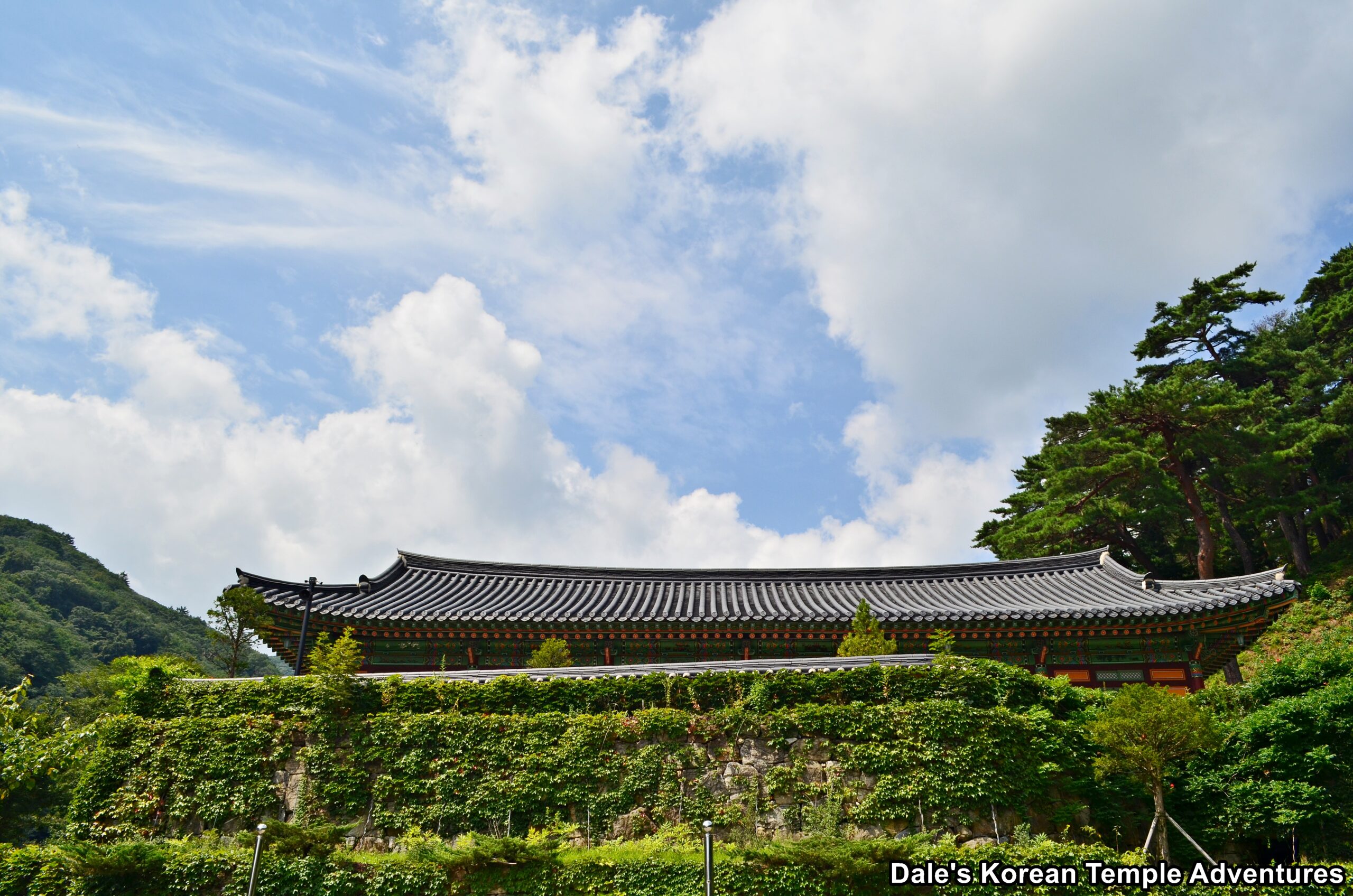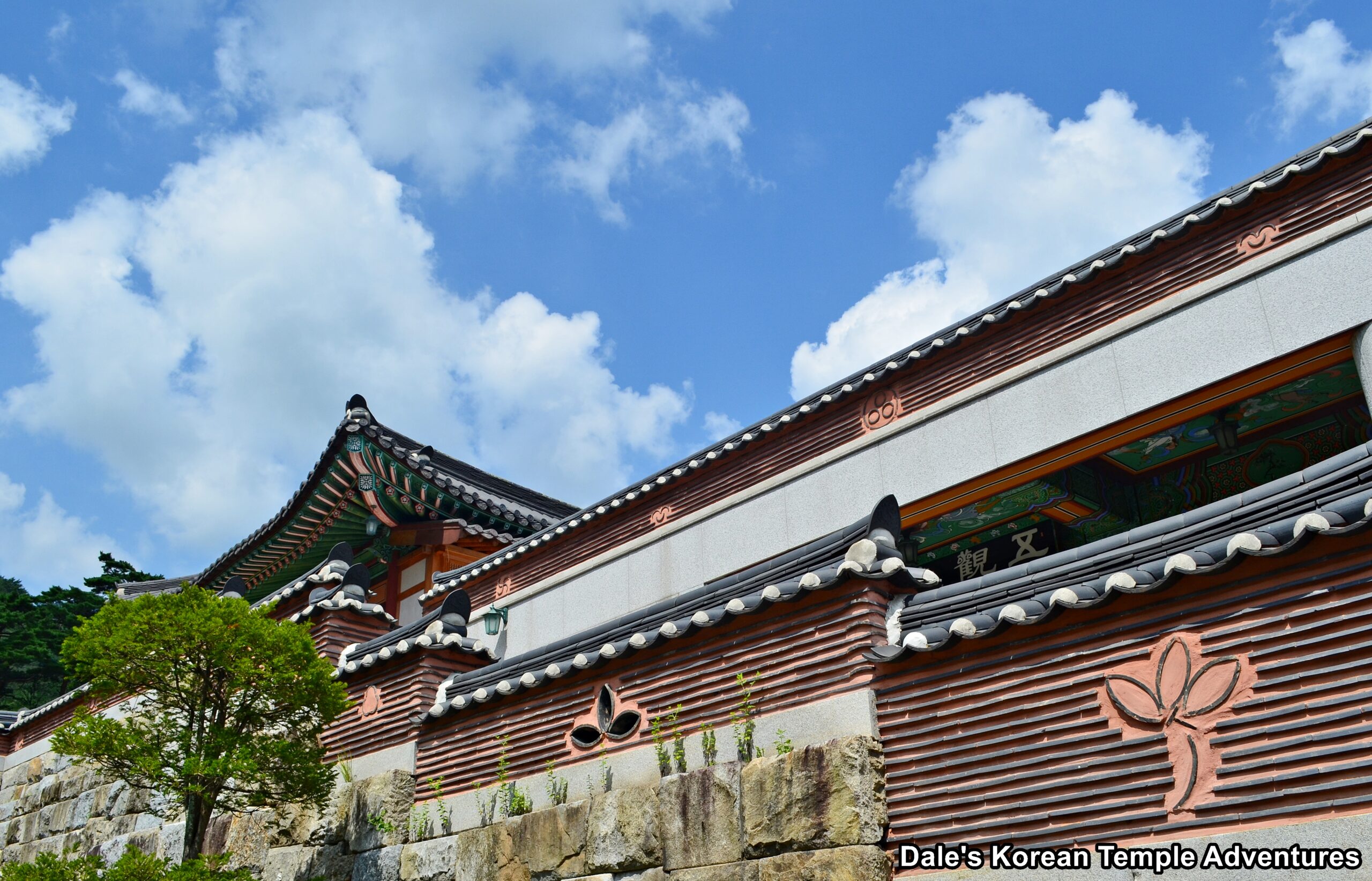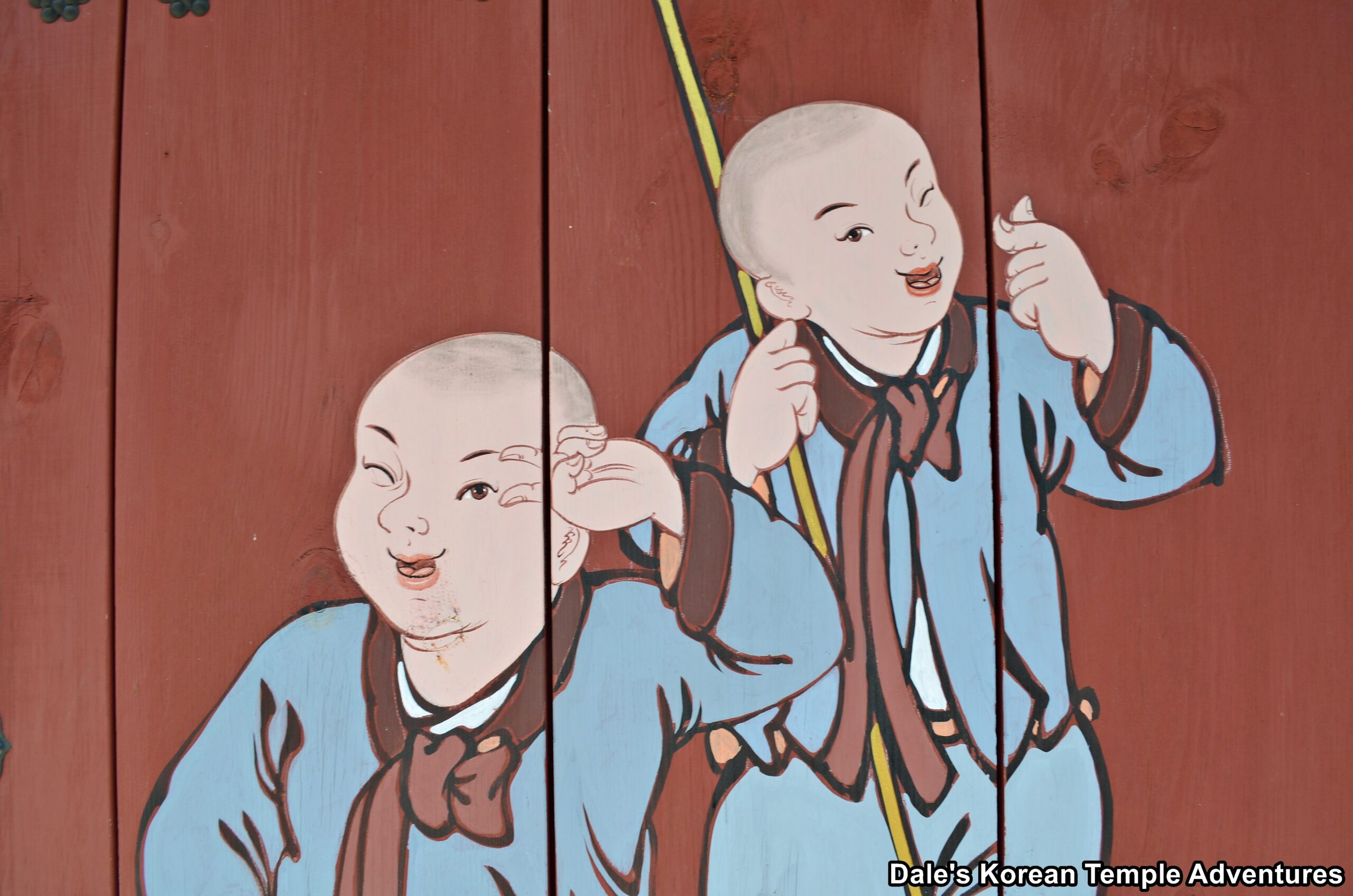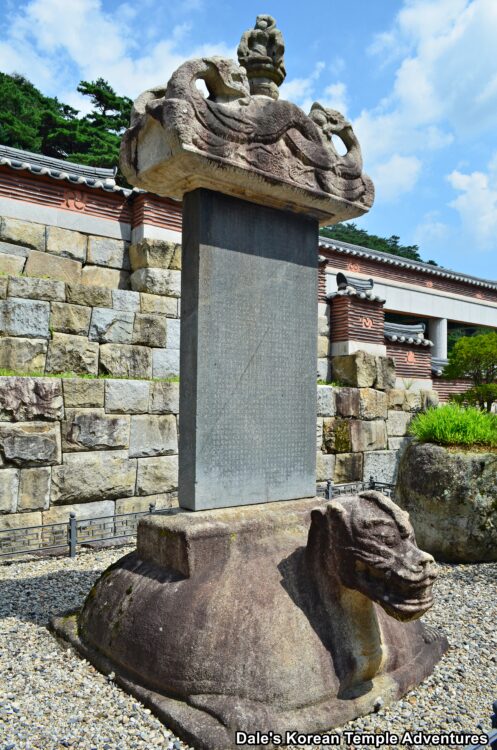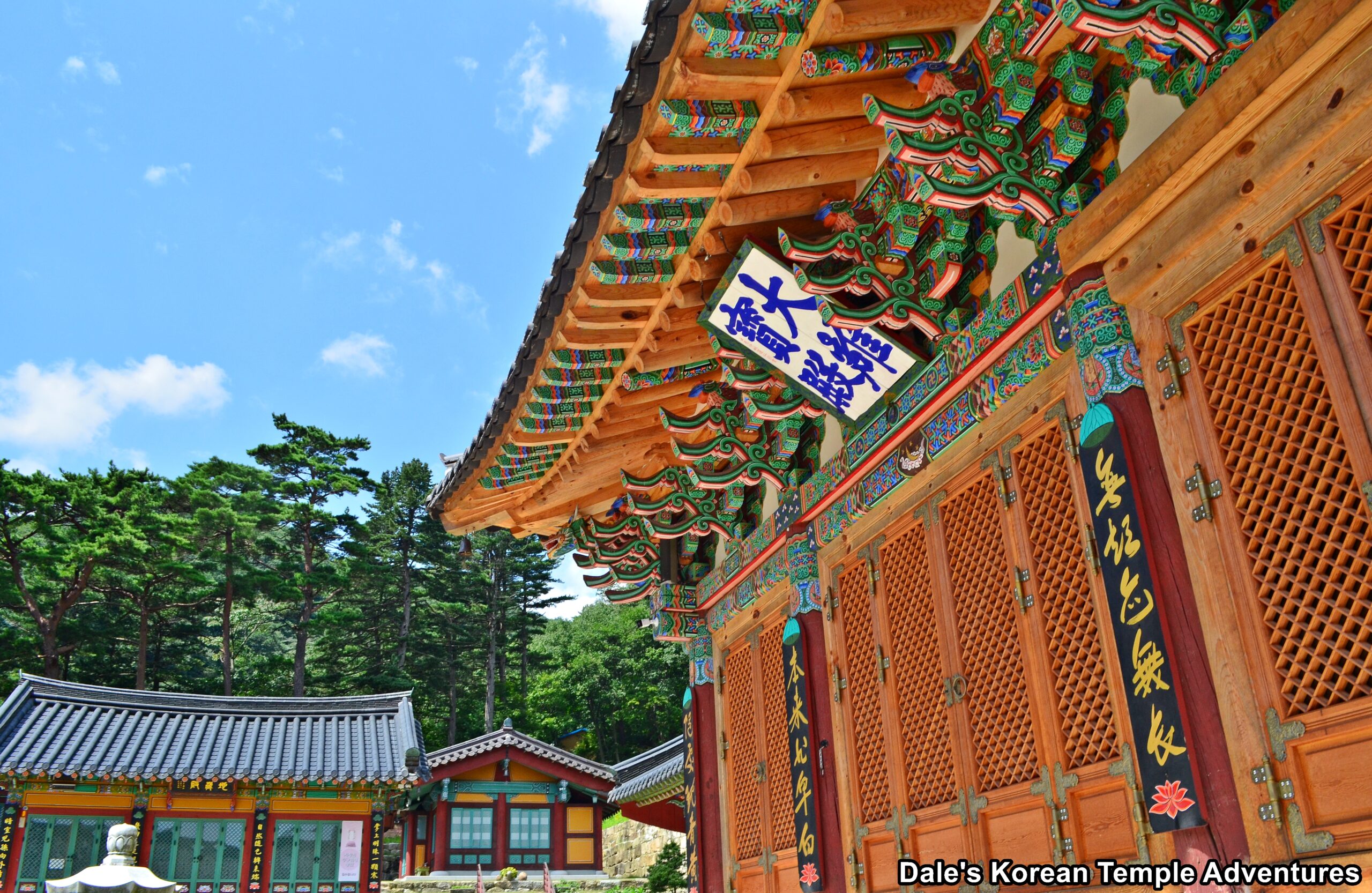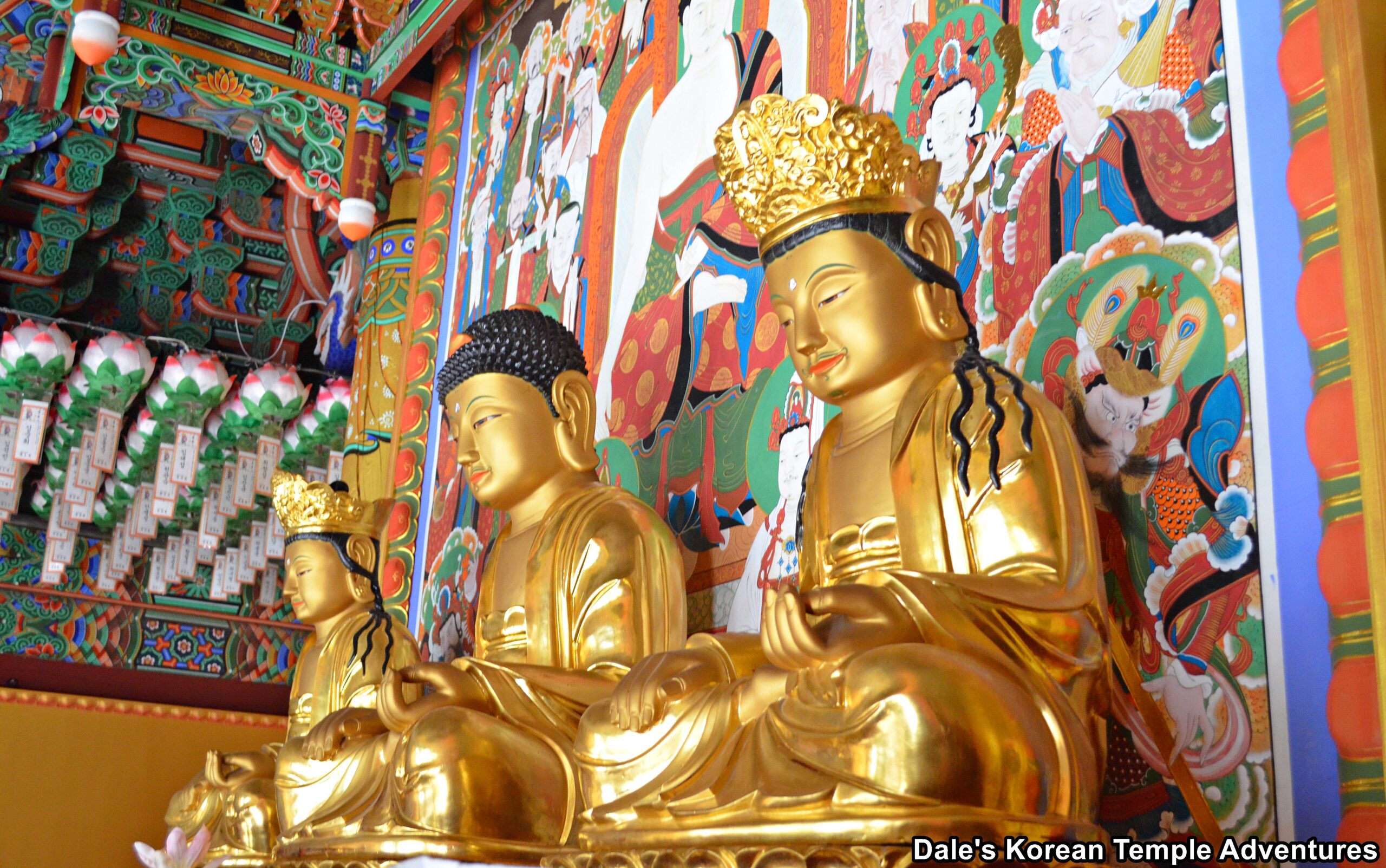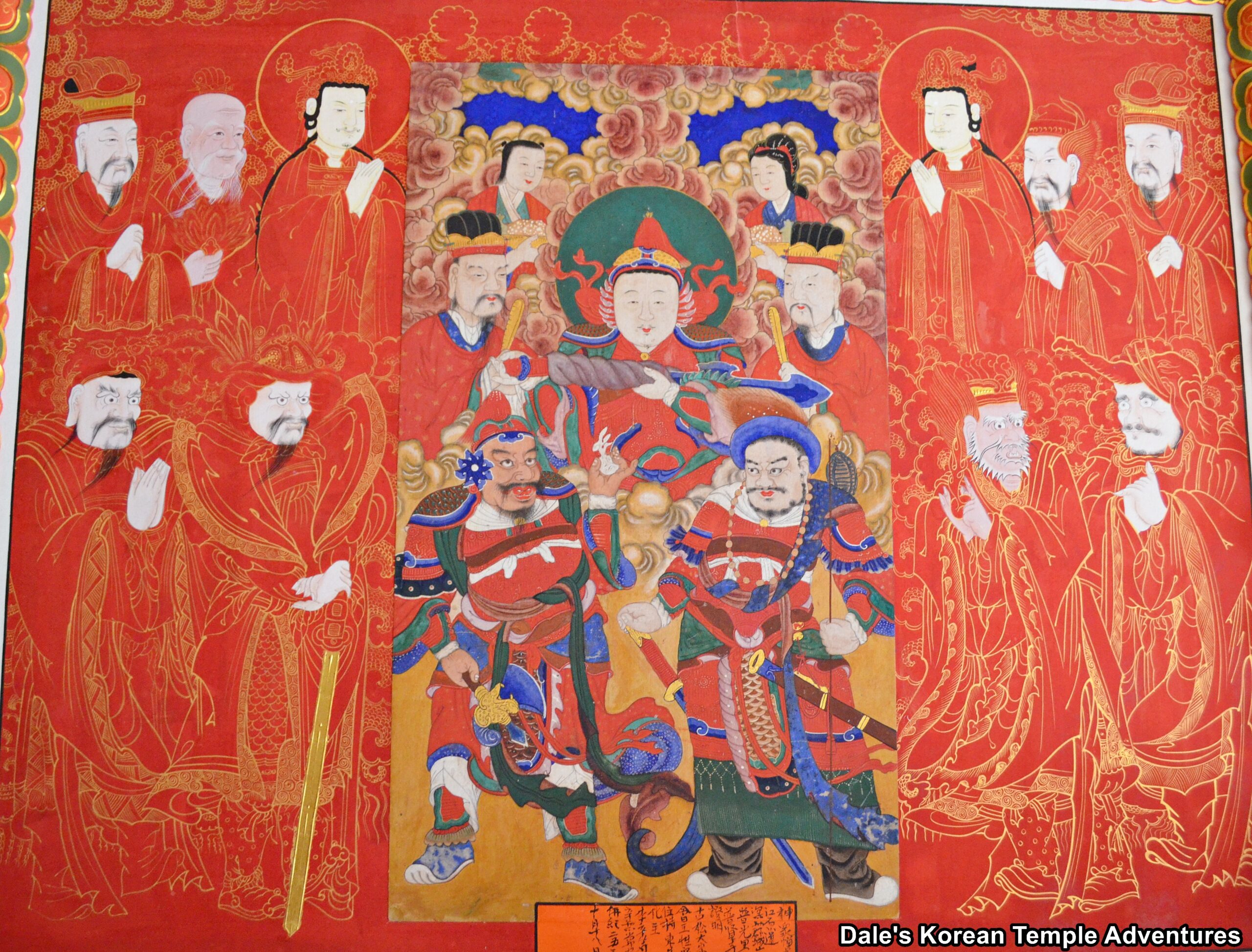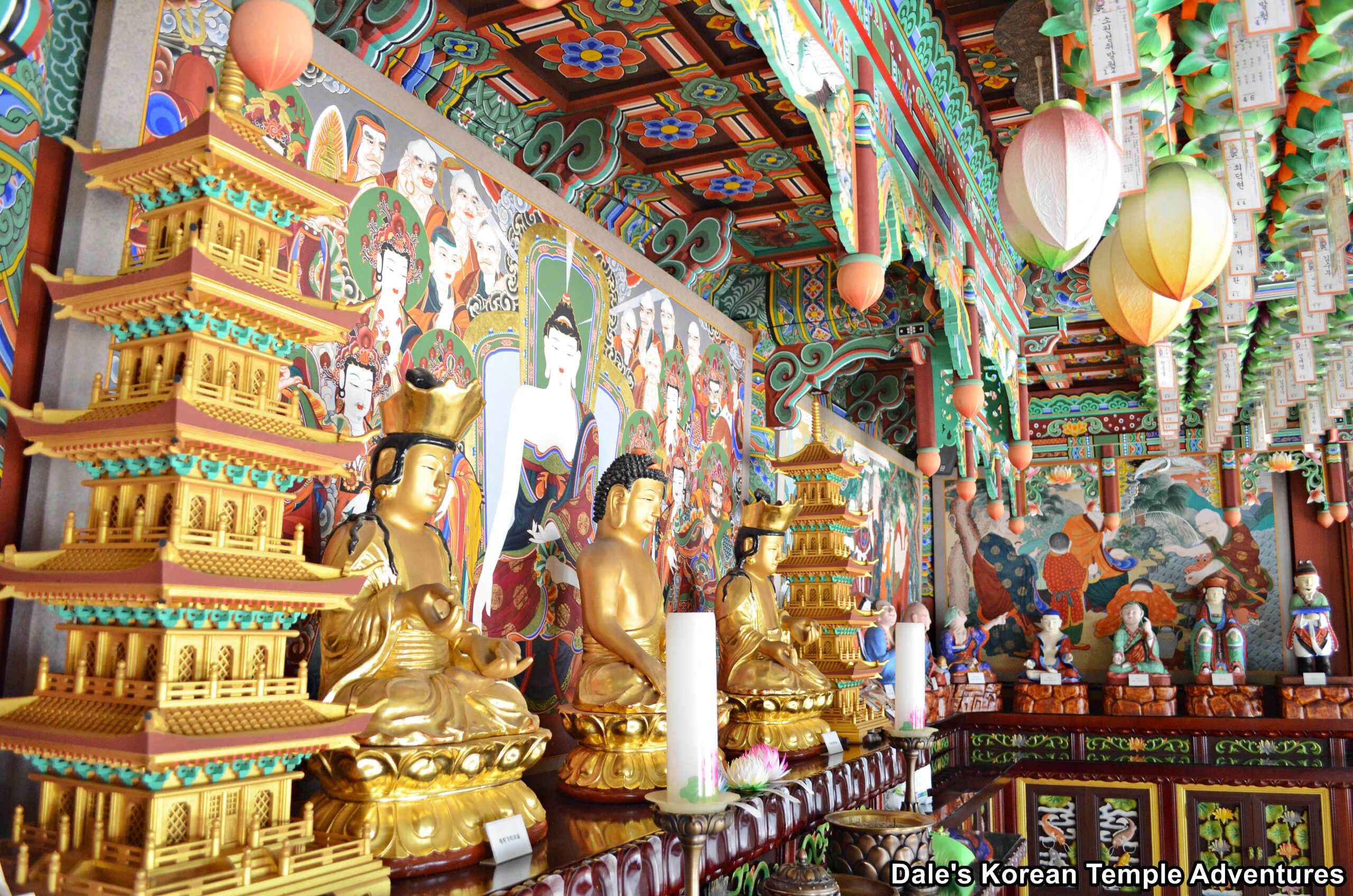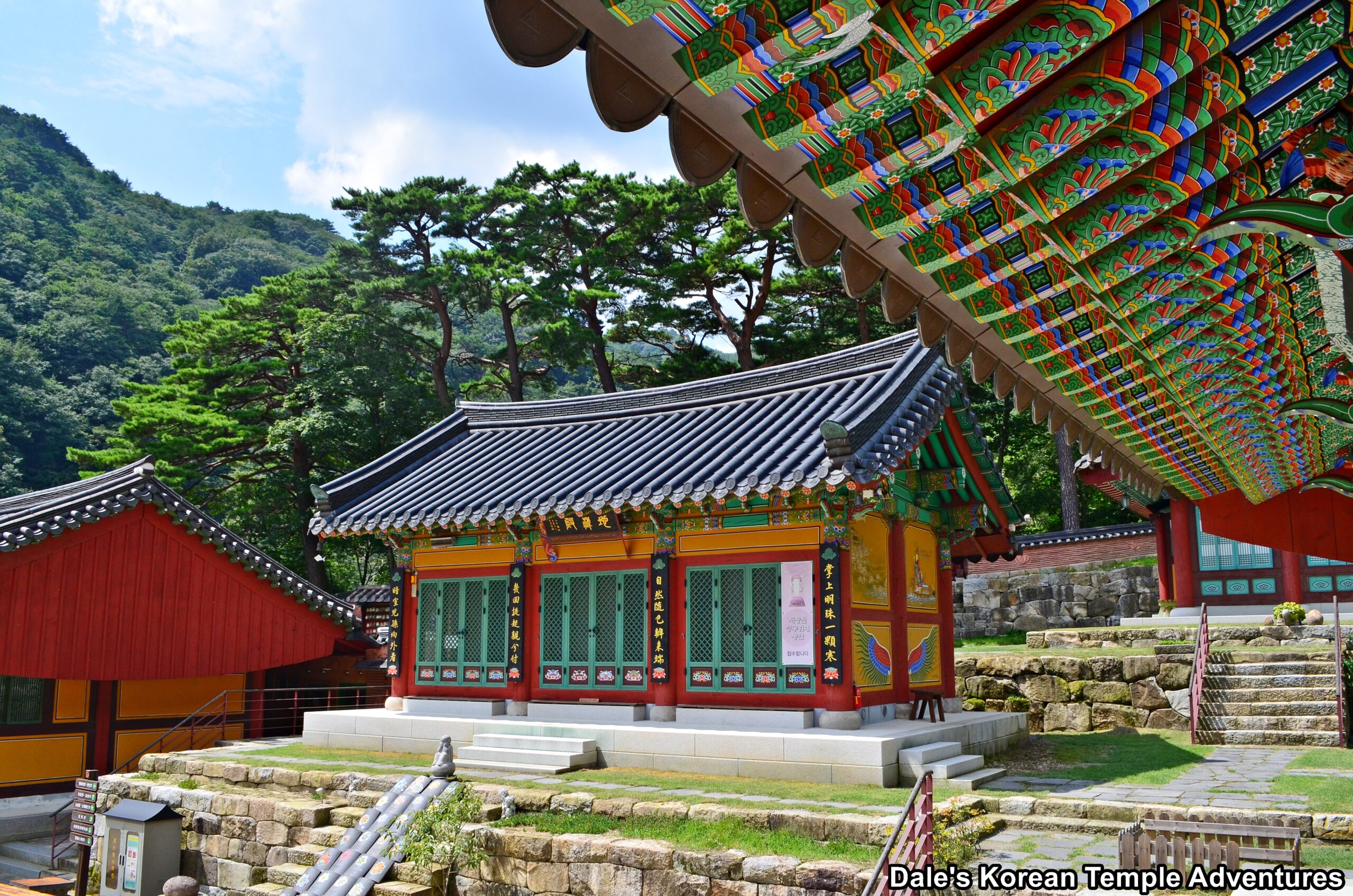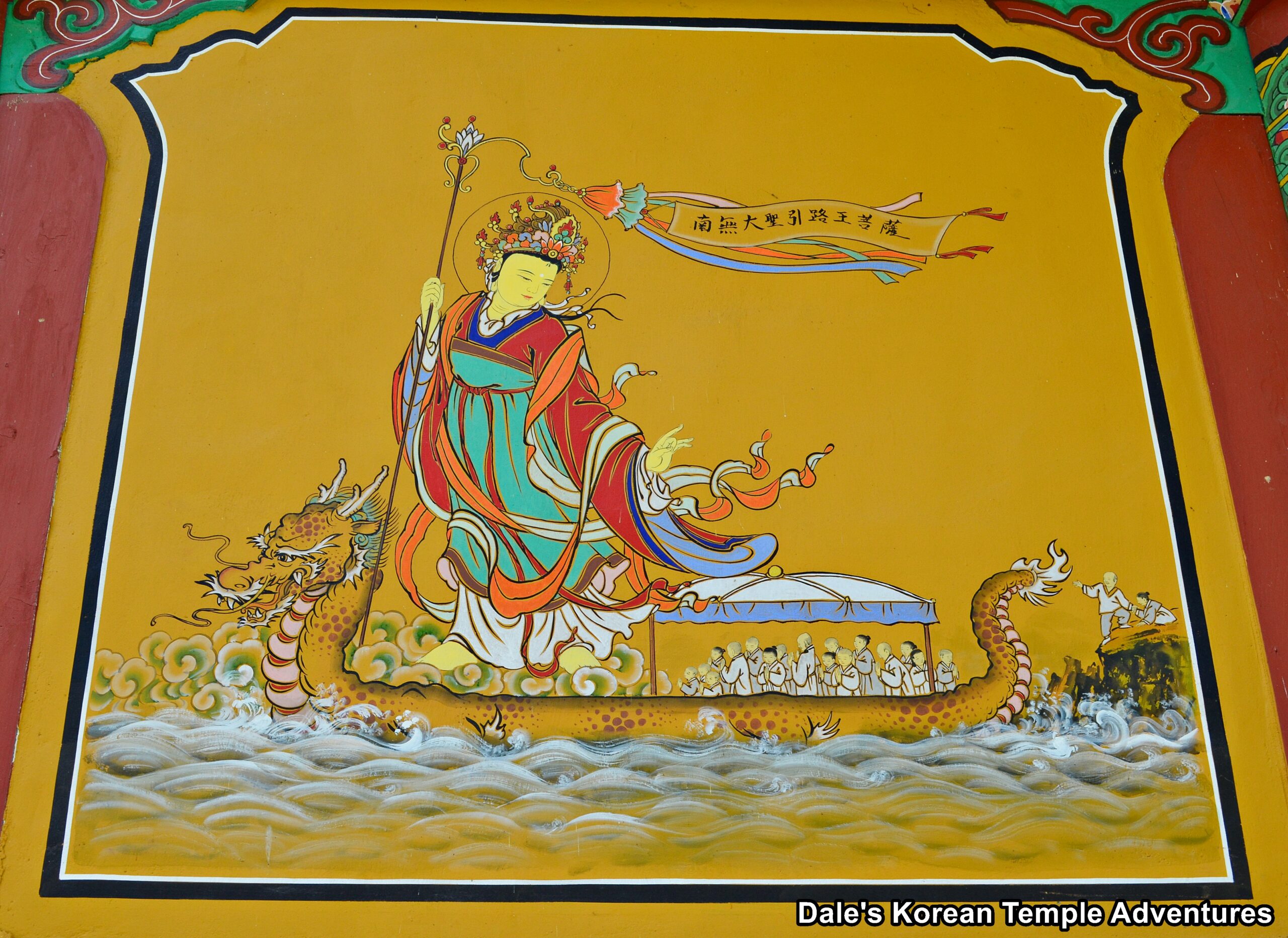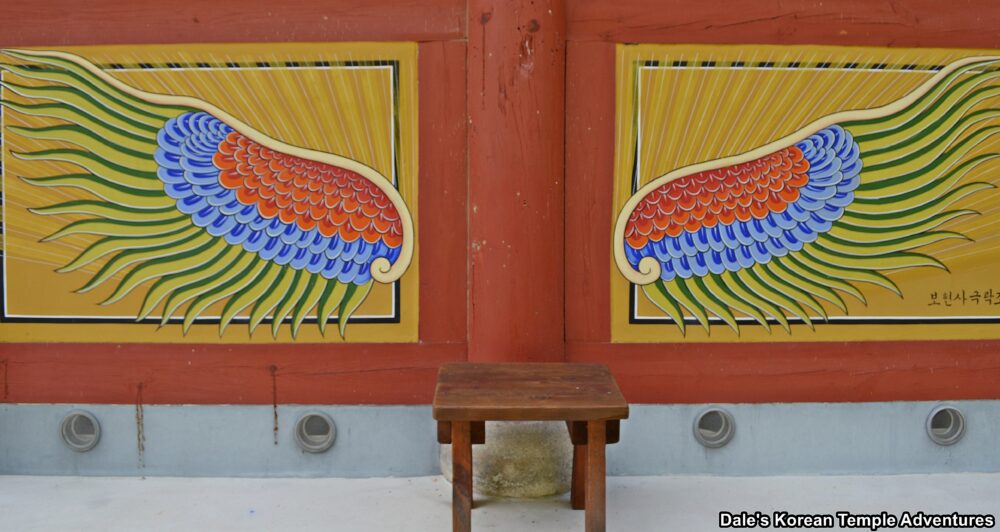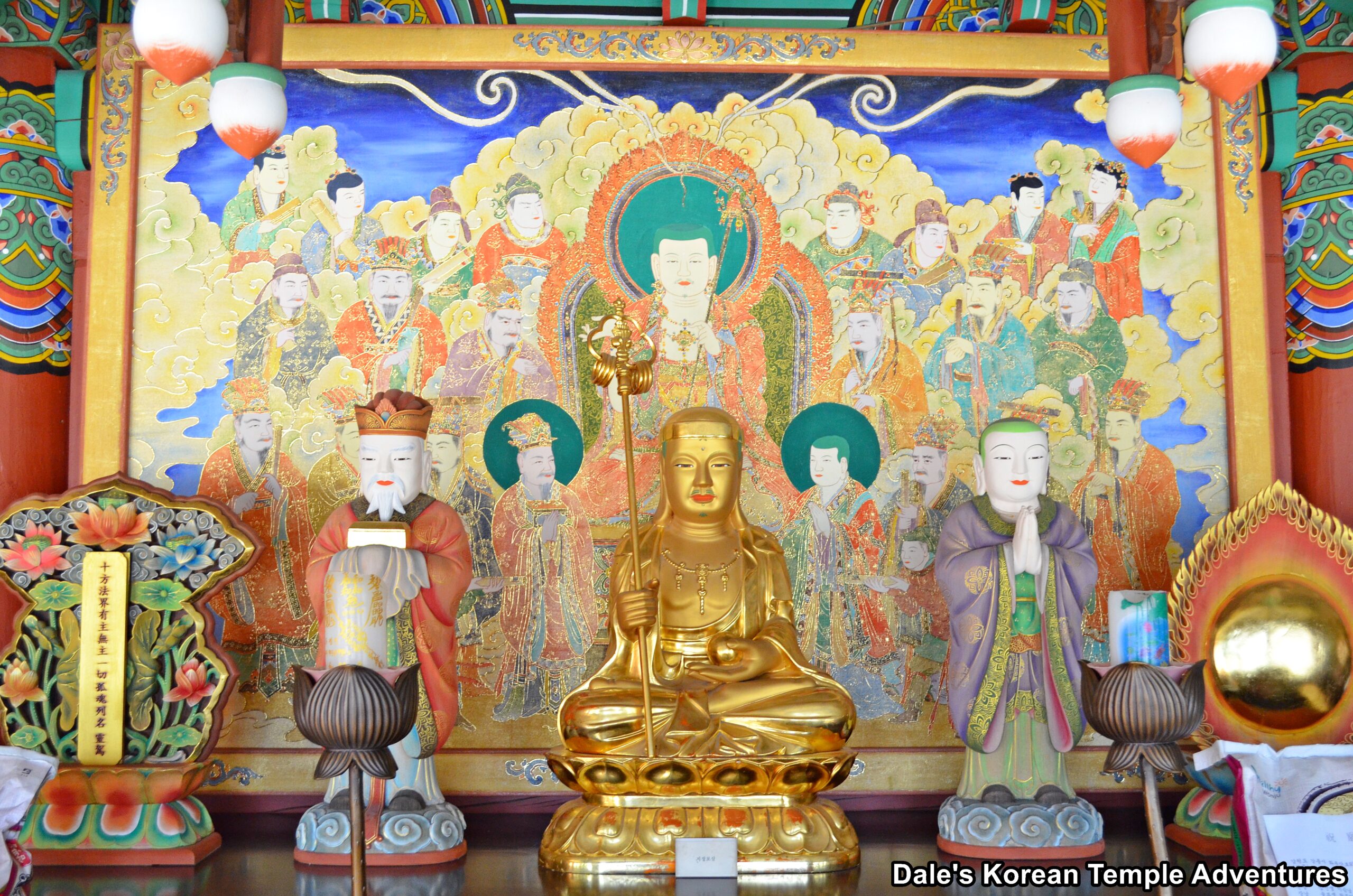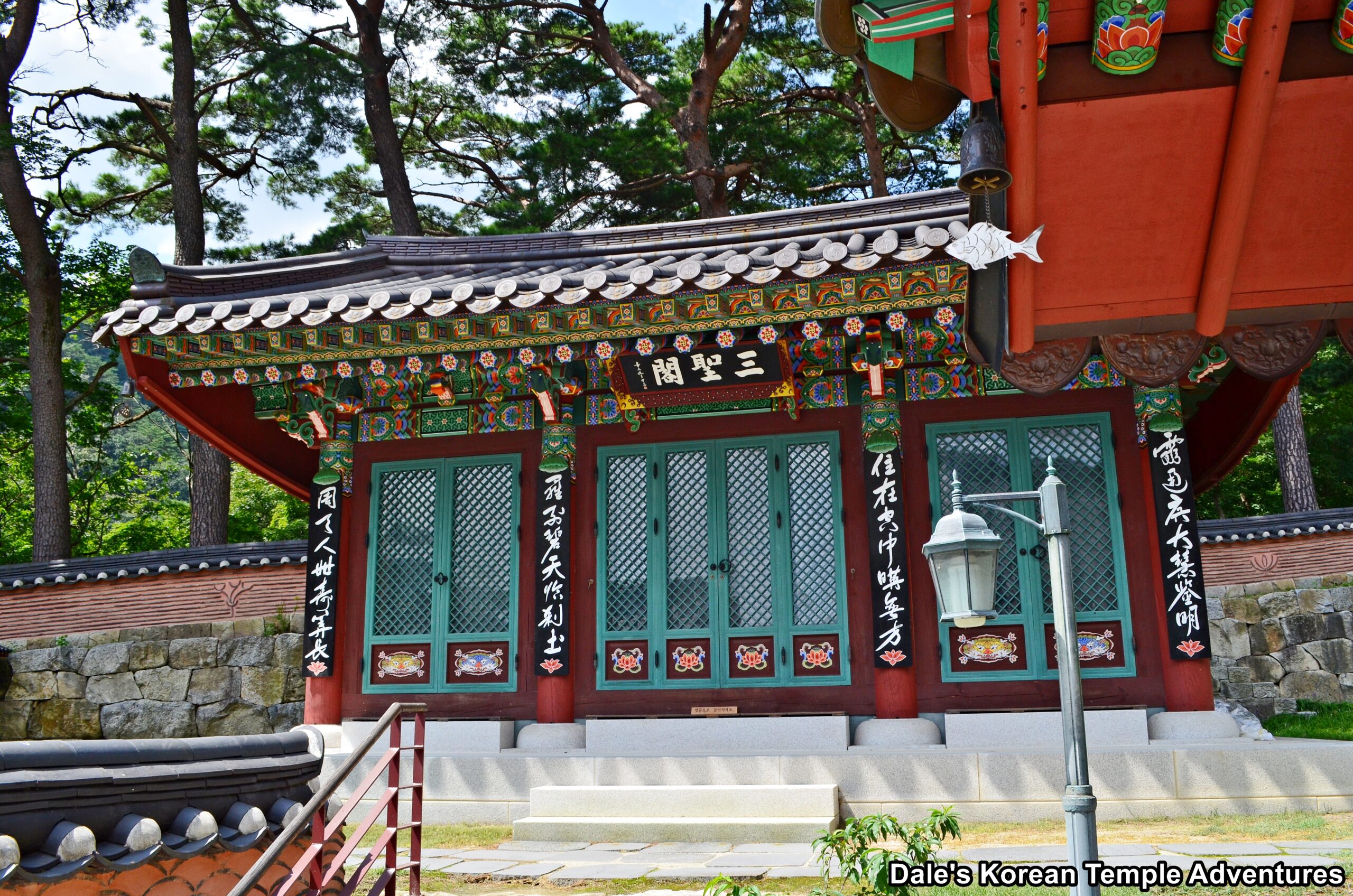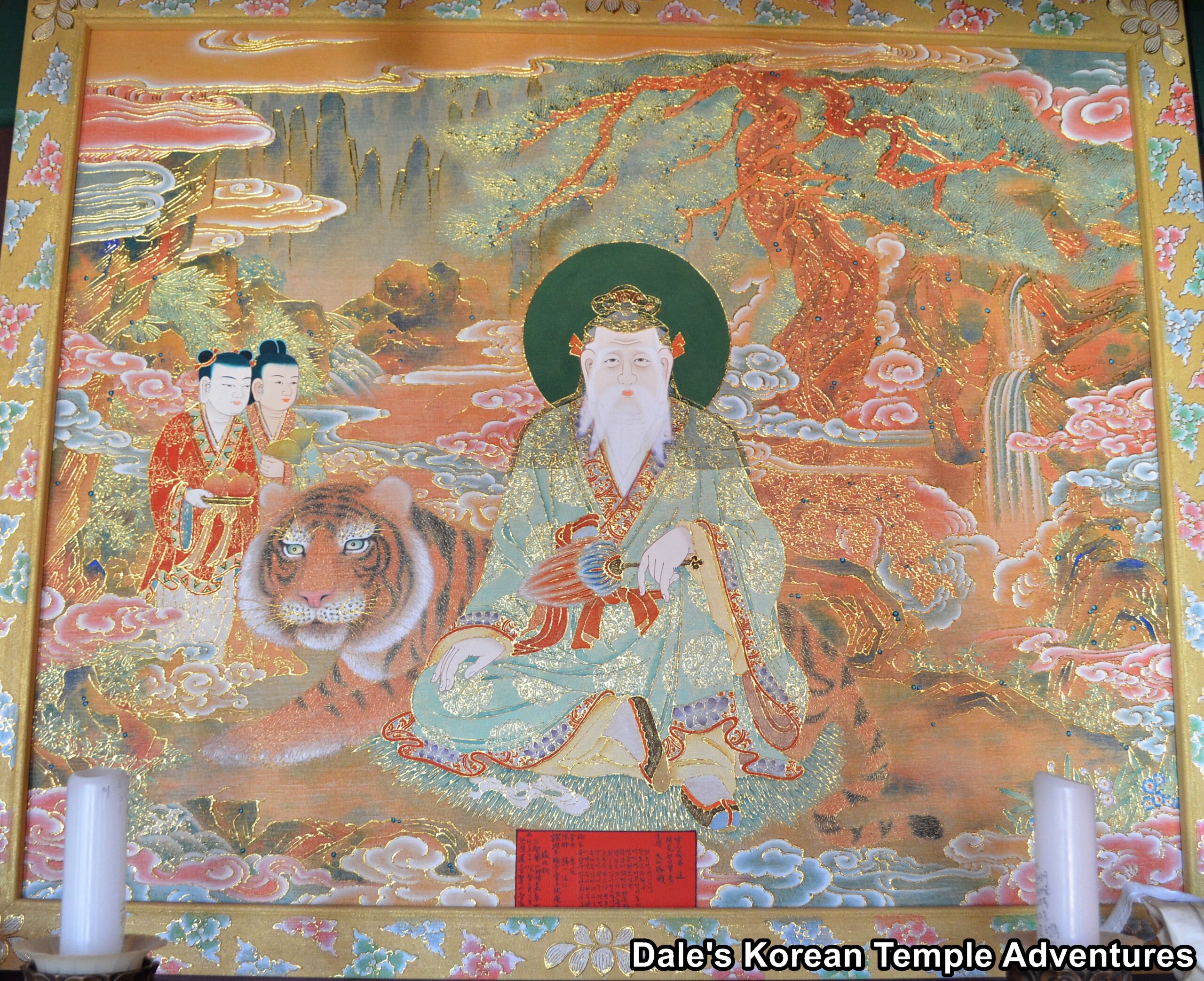Bohyeonsa Temple – 보현사 (Gangneung, Gangwon-do)
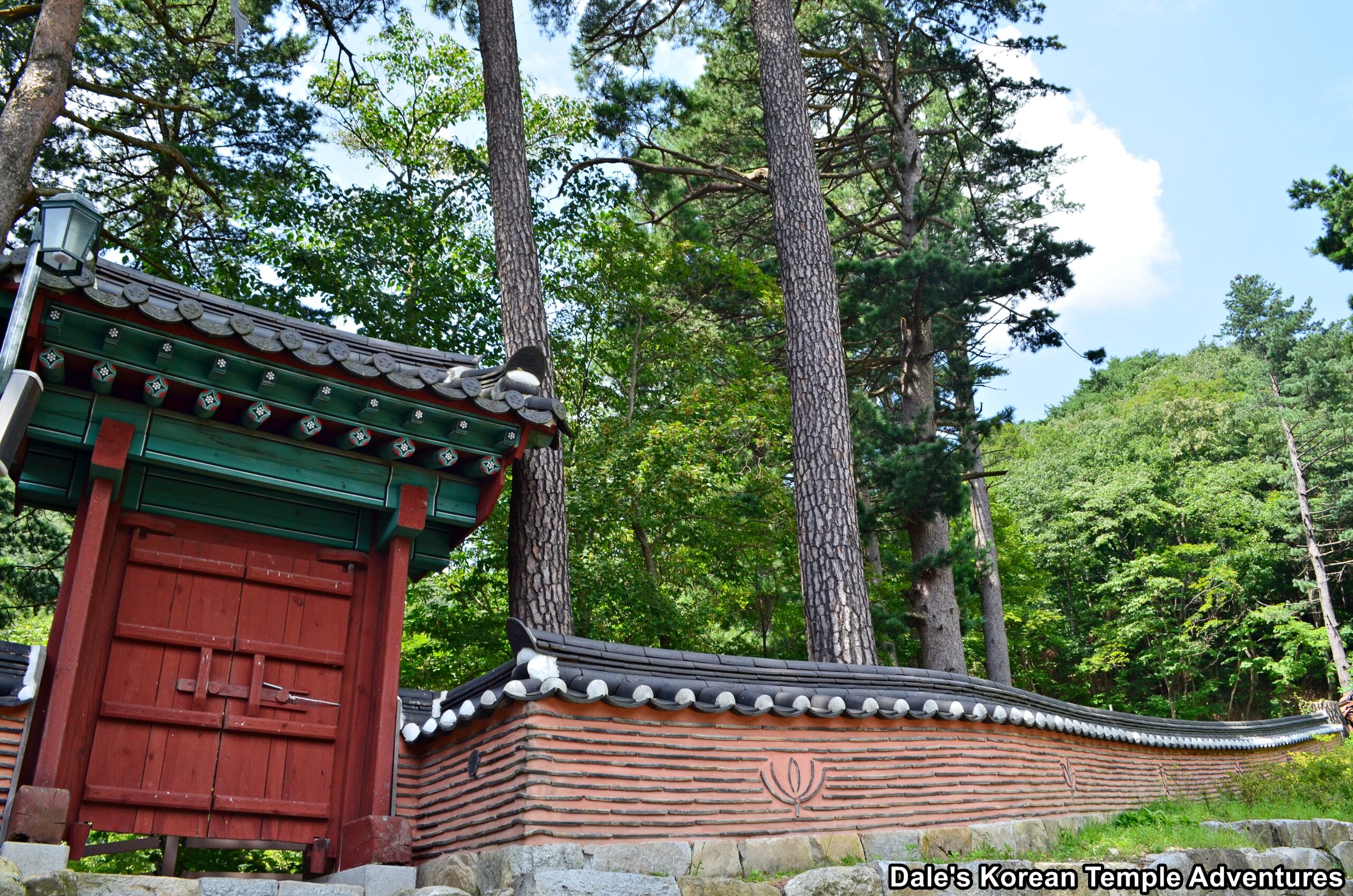
Temple History
Bohyeonsa Temple is located in western Gangneung, Gangwon-do in the foothills of Mt. Daegungsan (1,008.3 m). Purportedly, Bohyeonsa Temple was first established by Jajang-yulsa (598-658 A.D.) in 650 A.D. However, it was while the temple was headed by the monk Nangwon (834-930 A.D.) that the temple began to grow and prosper. Nangwon was a disciple of Beomil-guksa (810-889 A.D.), who first founded the Sagulsanmun Sect of Seon Buddhism in Korea. It was while Nangwon was the head of the temple that it was named Jijangseonwon, and the temple grew to become the head temple of the Sagulsanmun Sect. Eventually, Nangwon would become the State Preceptor during Unified Silla (668-935 A.D.) during the reign of King Gyeongae of Silla (r. 924-927 A.D.). Eventually, Nangwon would die in 930 A.D. inside the dharma hall at Bohyeonsa Temple. After his death, his disciples would bury his cremated remains next to a hillside to the west of the temple. In the process, they would erect both a stupa and a memorial stele to honour Nangwon. In fact, King Taejo of Goryeo (r. 918-943 A.D.), who was the founder and first ruler of the Goryeo Dynasty (918-1392), gave Nangwon the honorary title of Great Priest Nangwon and his stupa, Ojinjitap, which means “Enlightenment Stupa” in English. The stupa, which is officially known as the Stupa of Buddhist Monk Nangwon at Bohyeonsa Temple, is Korean Treasure #191; while the stele, which is officially known as the Stele for Buddhist Monk Nangwon at Bohyeonsa Temple, is Korean Treasure #192.
However, beyond the purported founding of the temple by Jajang-yulsa and the history behind Nangwon, very little of the temple history is known until more recently.
In addition to Nangwon’s stupa and stele, the temple contains other valuable heritage items including the Wooden Seated Bodhisattva of Bohyeonsa Temple from the Goryeo Dynasty, which is Gangwon-do Tangible Cultural Heritage #173; the Daeungbo-jeon Hall from the late-Joseon Dynasty, which is Gangwon-do Cultural Material #37; the Stone Seated Amitabha Triad of Bohyeonsa Temple inside the Daeungbo-jeon Hall from 1691, which is Gangwon-do Tangible Cultural Heritage #167; the sixteen Nahan of Bohyeonsa temple from 1882, which are Gangwon-do Tangible Cultural Heritage #171 (and are currently housed at the Woljeongsa Temple Museum); and the bronze temple bell, which is Gangwon-do Tangible Cultural Heritage #150 from 1794 and is currently housed at Gwaneumsa Temple in Gangneung, Gangwon-do.
Bohyeonsa Temple is also an active member in the popular Temple Stay program.
Temple Myth
Bohyeonsa Temple has one of the more interesting temple myths associated with it. According to this myth, Bohyeon-bosal (The Bodhisattva of Power) first founded the temple during the Silla Dynasty (57 B.C. – 935 A.D.). In this myth, and during the Silla Dynasty, both Munsu-bosal (The Bodhisattva of Wisdom) and Bohyeon-bosal reached Namhangjin Beach in the southeast part of Gangneung to found Munsusa Temple together. After Munsusa Temple had been established, Bohyeon-bosal said to Munsu-bosal “There is no need for two Bodhisattvas to stay at just one temple, so I will shoot an arrow. And where the arrow lands, I will build a new temple site.” And where the arrow landed is where Bohyeon-bosal built Bohyeonsa Temple in western Gangneung.
Temple Layout
You first approach Bohyeonsa Temple from the east and past the large Temple Stay buildings at the temple. The Temple Stay area has a cute painting adorning the front gates to this part of the temple with three novice monks being joined by their teacher. One of the novices makes a heart with their fingers, while the other makes a V-sign near their eyes. Simple but cute.
A little further along, and near the tall tile and clay walls, you’ll next come to the Stele for Buddhist Monk Nangwon at Bohyeonsa Temple fenced off in its own little compound. The stele is dedicated to Nangwon, as was previously mentioned. The stele has an epigraph written on it about the life and achievements of the former National Preceptor. The stele consists of three parts: the pedestal, the main body stone, and the capstone. The tortoise-shaped pedestal features a dragon’s head with clouds and hexagonal designs on its shell. The capstone is lavishly engraved with two swirling dragons and a lotus flower. Above the dragons, as though it’s crowning the stele, is a finial comprised of a “bokbal” (overturned bowl), a boryun (nine discs), and a boju (magic beads) surrounded by flames. The stele was erected ten years after the death of Nangwon, and the stele bears an inscription written by Choe Eon-wi. The inscription was written by Gu Jok-dal, who was considered the greatest calligrapher of his time. As for the body of the stele, it notes how Bohyeonsa Temple was once called Jijangseonwon and Bohyeonsansa Temple. Also, the temple changed its name to Bohyeonsa Temple during the Joseon Dynasty (1392-1910). And that there were two hermitages on the grounds called Jijangam Hermitage and Mitaam Hermitage. In fact, a lot of what we know about the temple and the monks that lived at the temple comes from this stele.
A little further to the west, and you’ll come across the two-story Boje-ru Pavilion. Passing through the first floor, you’ll find yourself in the main temple courtyard at Bohyeonsa Temple. The second story of the structure, on the other hand, appears to be a lecture hall for dharma talks.
Straight ahead of you is the Daeungbo-jeon Hall. The main hall appears to have just recently been restored, so only the eaves are painted in the traditional dancheong colours. Stepping inside the Daeungbo-jeon Hall, you’ll find a triad of statues resting on the main altar. In the centre of the three sits a meditative image of Amita-bul (The Buddha of the Western Paradise). Amita-bul is joined on either side by an image of Gwanseeum-bosal (The Bodhisattva of Compassion) and Daesaeji-bosal (The Bodhisattva of Wisdom and Power for Amita-bul). These are the aforementioned Stone Seated Amitabha Triad of Bohyeonsa Temple from 1691 that are Gangwon-do Tangible Cultural Heritage #167. On the far left wall is an elaborate Gamno-do (Sweet Dew Mural). On the right wall, you’ll find a painting dedicated to Jijang-bosal (The Bodhisattva of the Afterlife) and one of the most unique Shinjung Taenghwa (Guardian Murals) in Korea. The central seven images including Dongjin-bosal (The Bodhisattva that Protects the Buddha’s Teachings) are in colour, while the surrounding images are painted all in red and gold.
To the right of the Daeungbo-jeon Hall is the administrative office at Bohyeonsa Temple. And to the left of the Daeungbo-jeon Hall are a collection of three additional temple shrine halls. To the immediate left of the main hall is the Yeongsan-jeon Hall. The exterior walls to this shrine hall are adorned with murals of Nahan (The Historical Disciples of the Buddha). Inside the Yeongsan-jeon Hall, you’ll find a triad on the main altar centred by Seokgamoni-bul (The Historical Buddha). The three statues are then book-ended by two five-story golden pagodas that are about a metre in height. And on either side of these pagodas and the main altar triad are the sixteen Nahan. These statues of the Nahan are then backed by murals of the Historical Disciples of the Buddha.
To the left of the Yeongsan-jeon Hall, and in a slightly elevated courtyard, is the Myeongbu-jeon Hall. The exterior walls of the hall are adorned with some truly demonic paintings of the underworld and the punishments meted out there. There’s also a rather interesting pair of wings that are meant to represent the birds of paradise. The painting is entitled “Bohyeonsa Geukrakjo – 보현사 극락조.” And above this painting is a vibrant Banya Yongseon-do (Dragon Ship of Wisdom Mural) with a very prominent image of Gwanseeum-bosal at the helm of the vessel. Stepping inside the Myeongbu-jeon Hall, you’ll find a life-like image of Jijang-bosal (The Bodhisattva of the Afterlife). And the green haired statue of Jijang-bosal is backed by a beautiful mural of himself with the images that appear in the painting being outlined with gold. It makes for quite the impressive painting. The rest of the interior is occupied with memorial tablets for the dead.
And to the rear of the Myeongbu-jeon Hall is the Samseong-gak Hall. The exterior walls are adorned with images of various shaman figures that include a ferocious tiger. As for inside the Samseong-gak Hall, you’ll find equally vibrant paintings much like the golden main altar mural found inside the Myeongbu-jeon Hall. These shaman murals are dedicated to Chilseong (The Seven Stars), Dokseong (The Lonely Saint), and Sanshin (The Mountain Spirit).
To the left of the Samseong-gak Hall is a simple five-story slender pagoda. And to the right of the Samseong-gak Hall is the temple’s storage building for the treasures of Bohyeonsa Temple. Unfortunately, this is off-limits, as is the entry to the Samseong-gak Hall that leads up to the Stupa of Buddhist Monk Nangwon at Bohyeonsa Temple.
However, if you are in fact fortunate enough to see the stupa dedicated to Nangwon, you’ll find it 215 metres up the hillside. The octagonal stupa dates back to the early Goryeo Dynasty (918-1392). The stupa had previously collapsed and was more recently restored. Originally, it was placed near the entrance of Bohyeonsa Temple near its accompanying stele. The historic stupa was moved to its present location in 1991 at the foot of Mt. Manwolsan. The original support base was a three-tier stone structure. Now, however, the upper portion of it is placed directly on the lower part of the base. One side of the body stone is engraved with a door and lock design. The roof stone, on the other hand, is relatively thick and slants at a sharp angle. And there are some faint impressions that suggest that the capstone once had flower patterns adorning each of its eight corners. It’s believed that the stupa was erected in 940 A.D. at the same time as the accompanying stele.
How To Get There
The easiest way to get to Bohyeonsa Temple is by taxi from the Gangneung Intercity Bus Terminal, especially if you’re travelling in a group. The taxi ride will take 19 minutes over 15 km, and it’ll cost around 20,000 (one way).
Overall Rating: 7.5/10
The two major highlights, and they’re recognized as Korean Treasures, are the Stupa of Buddhist Monk Nangwon at Bohyeonsa Temple and the Stele for Buddhist Monk Nangwon at Bohyeonsa Temple. Adding to these two historic artifacts is all the artwork adorning all of the temple shrine halls, especially the murals that adorn the Myeongbu-jeon Hall. As for the artwork that occupies the interior of these temple shrine halls, the main altar murals inside both the Samseong-gak Hall and the Myeongbu-jeon are particularly stunning as is the natural beauty that surrounds Bohyeonsa Temple.
